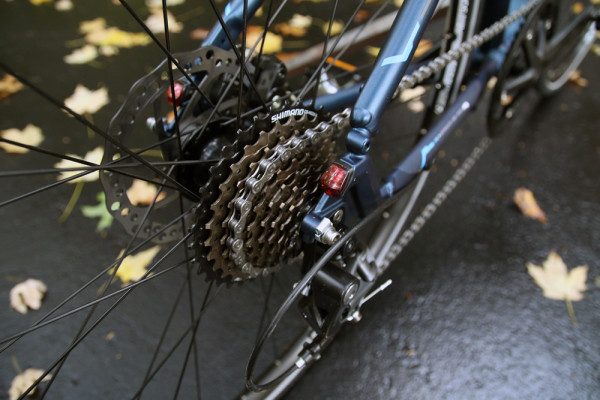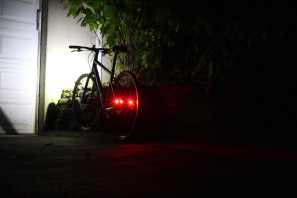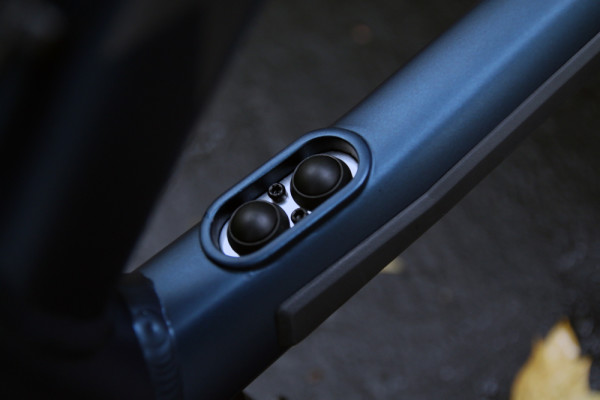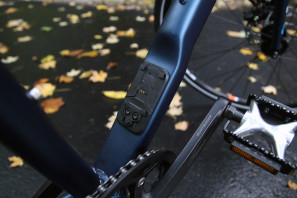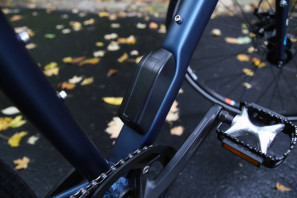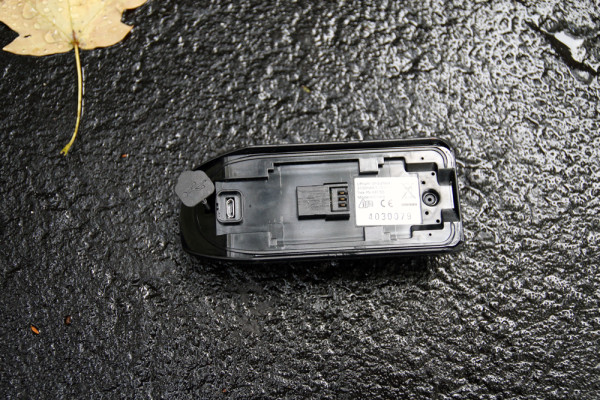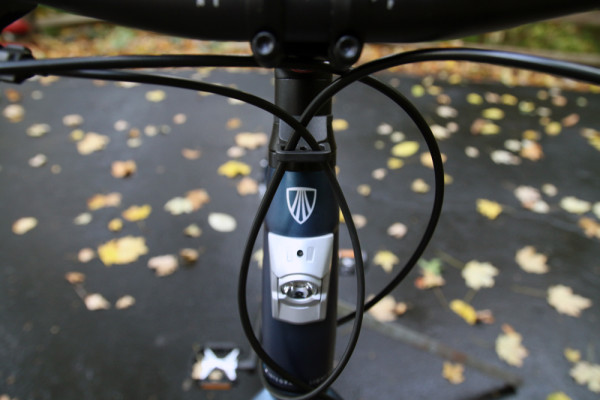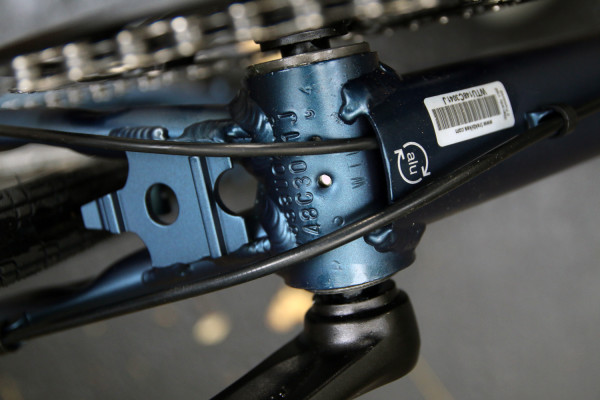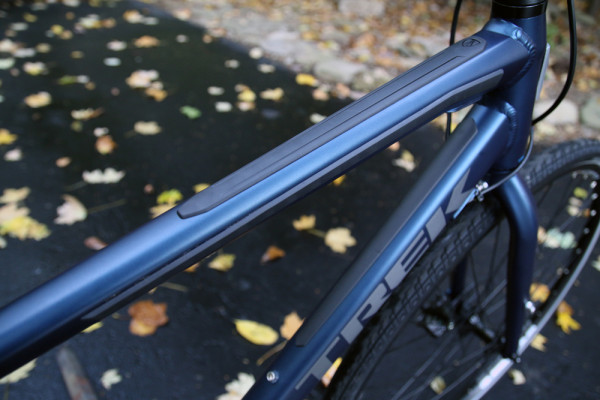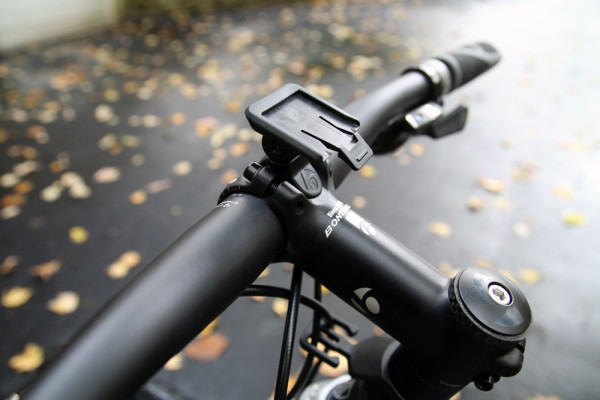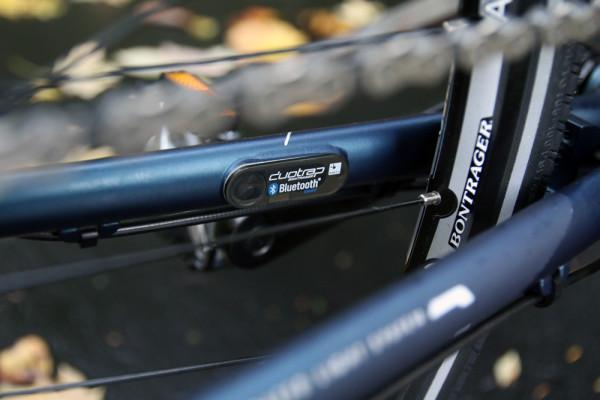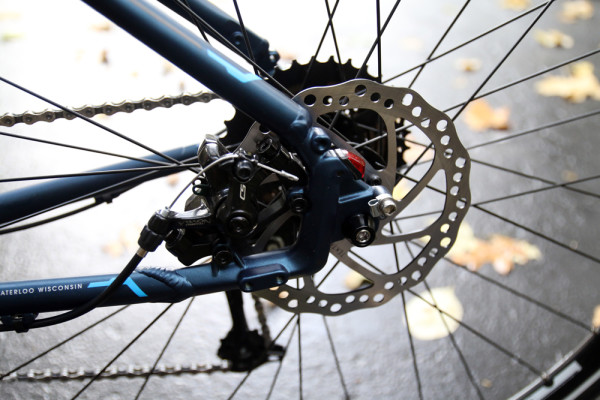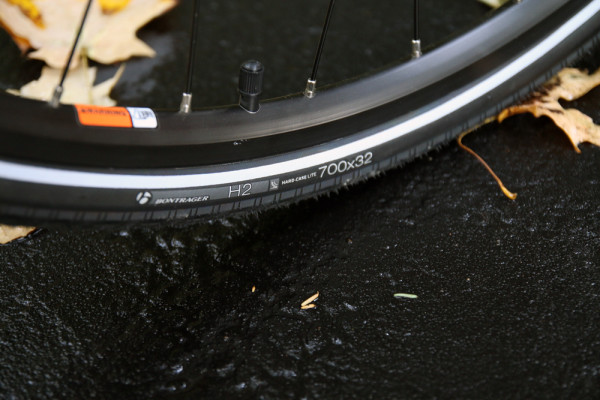The Trek Lync has a battery – but it’s not what you think. Instead of helping to power you along to the chagrin of many, the battery is there simply to help you find your way. Batteries on high end bikes are nothing new, be it for an electronic drive train, automated suspension system, or other uses, they are still fairly rare on entry level bikes and hybrids.
In the case of the Trek Lync series, the battery is there to provide both front and rear illumination with complete integration. Right off the showroom floor, the Lync is ready for the streets including those that require bicycle lights by law. As long as the battery pack is charged, you can zip along to your destination turning on the powerful lights with the flick of a switch. Even better, once you arrive and lock up your bike you no longer have to worry about removing lights to prevent them from being stolen.
See why we’re ok with batteries on the Lync 3, next…
Trek is certainly not the first company to integrate lights into a frame, but it does mean consumers have wide access to a well designed city bike with its own lighting system at their local shop. In most of the surveys we’ve seen, one of the biggest reasons for people not riding their bikes is the amount of time it takes to get ready, or the hassle of all the different gear. The Lync takes at least one of those steps out of the equation making it extremely simple to just jump on and ride.
These aren’t just to-be-seen lights either, with the front pumping out 500 lumens on high power, the headlight is more than enough to safely ride in complete darkness. The rear lights are equally bright and are positioned low on the seat stays so that whatever bag or rack you are using won’t block the LEDs.
Both lights are controlled through a sleek button cluster located on the bottom of the top tube. The two buttons are large enough to easily reach while riding if you need to change modes, but out of the way of the elements. A click of either button will power up both lights, while subsequent clicks of the front will cycle through low and high power for the headlights, and clicks on the rear will switch between steady and flashing for the rear. Holding either button down will shut off both lights.
The first ride left us feeling that the light was shining too high – which was only a problem until we figured out how to adjust it. The allen screw in the center of the headlight isn’t to hold it onto frame, instead it is a built in adjuster. Threading it in will point the headlight down, while threading it out has the reverse effect. This isn’t really something easily done on the fly, but once set up it should be good to go.
If there was one thing we could change for the light modes, it would be the addition of a front flasher or the ability to just run the rear. I always try to run a flashing rear during the day, but don’t really have the need for the front to be on which surely drains the battery. If you could run the front on flash, or not at all it would allow for the use of the rear in daylight with what should be improved battery life.
The battery itself is mounted to the downtube just in front of the bottom bracket. The small lithium ion battery pack is easily removed from the frame for charging though the micro-USB port on the underside of the body. The battery is honestly a solid design as it allows you to lock your bike up, then slip the battery in your pocket so you can charge it up while you work if you’re commuting. Overall you’re looking at around 5 hours of run time per charge, depending on headlight usage.
When you mount a light to a bike’s head tube, there is a slight issue that pops up – cables. Put a powerful light behind a shift or brake cable at close range and you end up with some pretty major dead spots in your field of view. To prevent that from happening, the Lync has a headset mounted cable management clip that keeps the cables out of the way.
The Lync 3 also features internally routed shift cables, though the brake hoses remain external which is more important for the Lync 5 which gets hydraulic brakes instead of the Tektro mechanicals here. Of course the city bike is equipped with a kickstand plate as well.
Knowing that the Lync will likely be locked up, the frame is provided with bumpers for both the top and down tube to prevent bike racks or locks from damaging the frame.
Additionally the Lync includes both the Duotrap capability and Blendr stem mounts for additional lights and computers. The Blendr mount can also be completely removed if you prefer a more streamlined look without the additional mount.

To keep things simple, the Lync 3 sticks with a 1×9 speed drivetrain with 44 x 11-34 gearing. In most city riding situations this should be adequate, but if you live somewhere with some serious hills, the 27 speed Lync 5 might be a better option.
Tektro Novela mechanical disc brakes aren’t the sexiest around, but they get the job done and offer reliable braking even when wet.
On pavement the aluminum Lync 3 with a steel fork provides an exceptionally smooth ride which is probably partly due to the Bontrager H2 Hard Case Lite tires. At 32mm wide they are plenty big to handle most potholes and dirt paths, while the Hard Case Lite puncture protection should get you there without feeling deflated. The tires also offer an insanely bright reflective strip that will get you noticed by cars even if the lights don’t.
Both Lync models also feature full coverage fenders to keep you dry in any weather. Unfortunately ours were damaged in transit after what looks like UPS using the box as a tackling dummy to prepare for football season. The Lync 5 also gets upgraded to include a rear rack as well for running panniers. We’re not quite up to date on our city bike weights, but at 28 lbs with the included pedals, the Lync 3 doesn’t seem too bad.
Available in 5 sizes from 15 – 25″, the Lync 3 retails for $989.99. If you’re looking for an easy riding city bike that doubles as a commuter with its own light source, the Lync is certainly worth a look.


